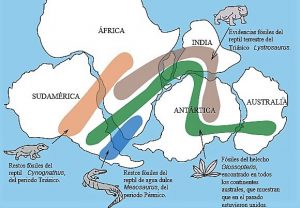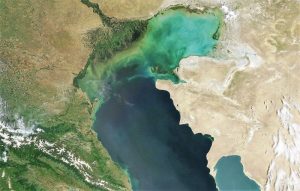Conurbation
A conurbation is the union originated between several cities, towns or urban areas due to their growth. We can say that the result of the rapid growth of several cities which decide to integrate to create a single system. This system can become hierarchical; however, it is important to mention that the different cities that form it have the ability to maintain independence both in terms of functionality and dynamism. In this way, a conurbation is formed by several parts, but each one of them has functional and organizational differences, and each one of them has its own space in the determined area. Each of the cities that make it up has its own dynamics of life, its specific economic resources by areas and also has the necessary capacity to attract investors. They have a unique way of being and a culture that identifies them among many other types of communities.
What is a conurbation?
A conurbation is the union between several towns, cities or inhabited areas due to the rapid growth of cities that decide to form a single system while maintaining their independence, life dynamics, economic resources, functionality and dynamism.
Etymology
The term conurbation is due to Patrick Geddes who in his writing “Cities in Evolution” written in the year 1915; looked for the way to describe the growth, as a whole, as a group of cities in urban development in which there were different places that had grown and were united by common interests.
Conurbation characteristics
- The cities that make it up have a rapid increase in population and industrial and technological development.
- The city limit expands and the urban center merges with another in a slow but continuous urbanization process and regional development.
- Conurbations are associated with a specific stage of urban development.
- Conurbations can be developed due to the expansion of a metropolitan city.
- A conurbation shows a high population density; its population is much larger than that of nearby cities.
- A conurbation has several industries working within it that depend on reserves of labor and transportation.
- Due to cheap and excellent transportation facilities, a conurbation serves as a commercial center for the same people who live there.
- Financial individuality varies constantly.
Conurbation types
There are three different types of conurbation around the world. The first of these is a regional process associated with the industrial development model, in which several cities manage to lead the transformation process. The second type corresponds to the crisis that occurs in a traditional rural society and that is formed around an open capital, they only witness an urban growth generated by the increase in the population with abundant tertiary material, professionals and industry. The third type is the one that is formed by a certain type of population in which there are numerous nuclei of urban dimension and which are not far from bulls.
Examples of conurbation
One of the most important examples can be seen in Argentina, specifically what is known as El Gran Buenos Aires, often also known as conurbano bonaerense. This is an example of conurbation where the various parties surrounding or near the City of Buenos Aires, such as Florencio Varela, General San Martín, Lomas de Zamora, Avellaneda and San Isidro, created a union known locally as cordons. In it there are several groups of cordons: successive rings that are located according to their proximity to the City of Buenos Aires. The towns closest to the city are responsible for composing the first cordon of the conurbano bonaerense.
In Uruguay, for example, we can find the Maldonado conurbation, located in Punta del Este. These cities used to have a considerable geographical and cultural distance, but, over the years, they became progressively united.
In Spain, in the province of Alicante we can find the Elda-Petrel conurbation, where the inhabitants are divided between the dominion of the Valencian language and Castilian. The Uruguayan territory, meanwhile, is home to the Maldonado-Punta del Este conurbation, one of the urban territories that has grown the most in Uruguay in recent decades, a product of construction and tourism.
The main urban conurbations in the world are:
- Tokyo (consisting of Tokyo, Yokohama, Kawasaki and Chiba) with approximately 36.5 million inhabitants.
- New York (New York-Newark, New Jersey Paterson) with about 22.3 million.
- Mexico (Mexico DF-Netzahualcoyotl-Ecatepec-Naucalpan) with some 22 million inhabitants.
The largest conurbations we can find in Europe are the following.
- Moscow, with 14.5 million
- London, with 12.4 million
- Cologne, in the Ruhr, with 11.7 million
How to cite this article?
Briceño V., Gabriela. (2019). Conurbation. Recovered on 24 February, 2024, de Euston96: https://www.euston96.com/en/conurbation/










